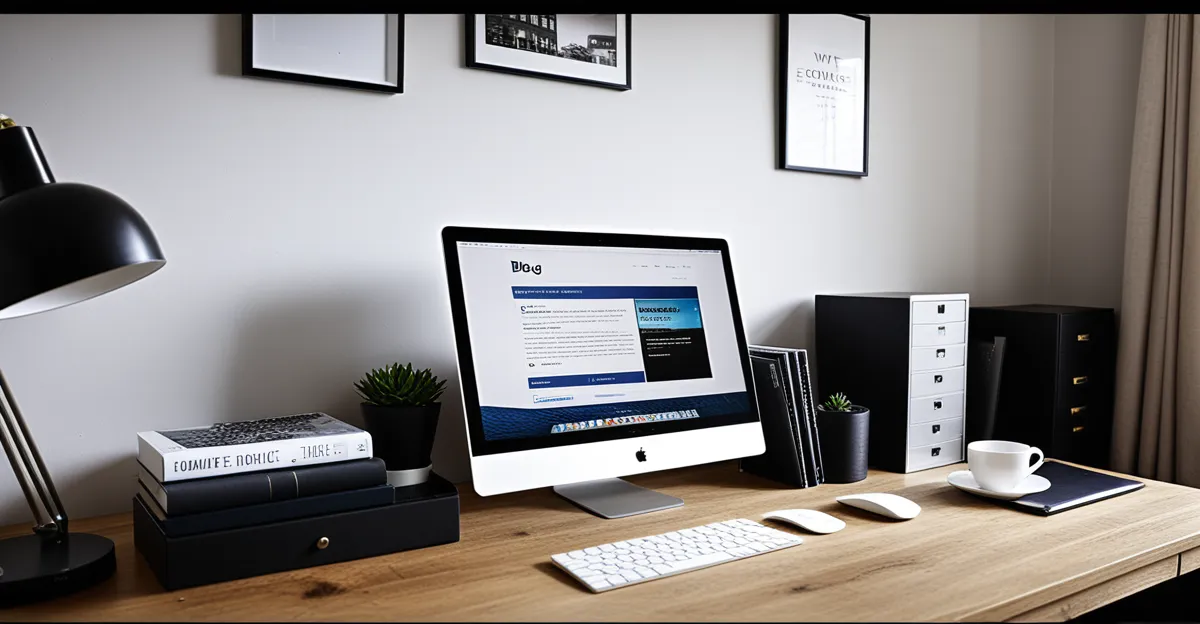Essential Tips for Creating a Functional UK Home Office
Designing a productive home office UK requires prioritising a dedicated workspace that fosters focus and efficiency. A clear division between work and personal areas helps maintain boundaries, crucial for wellbeing and productivity. For many UK homes, space is limited, so practical design solutions tailored to typical UK layouts are essential.
When working with small or shared spaces, maximise every inch through clever use of multi-functional furniture or foldaway desks. Utilising corners or under-stair spaces can also optimise your office footprint. Additionally, natural light sources should be incorporated to energise your work area, as many UK homes benefit from varied daylight patterns throughout the year.
This might interest you : How Can You Transform Your Living Space on a Budget in the UK?
Customising your workspace according to the UK lifestyle means considering local climate and cultural working habits. For instance, integrating heating controls or adjustable lighting can make long hours more comfortable, accommodating the often cooler and darker UK environment.
By combining these tips for functional workspace design, you create a space that not only fits your home but also promotes consistent productivity. Bear in mind that a well-planned UK home office design supports your daily workflow and aligns with your specific needs, ultimately enhancing both comfort and focus.
Also to see : How Can British Homes Improve Comfort Without Sacrificing Style?
Ergonomic Design for Comfort and Health
Creating an ergonomic home office setup UK is fundamental for a comfortable workspace that supports long-term health. Essential ergonomic tips UK begin with choosing the right chair—opt for one with adjustable height, lumbar support, and armrests to maintain good posture. A well-designed desk should allow your elbows to rest at a 90-degree angle and your computer screen to be at eye level, reducing neck strain.
Adjusting your UK home office design for posture includes positioning your feet flat on the floor or on a footrest and keeping frequently used items within easy reach. This prevents unnecessary stretching and supports natural movement.
Lighting also impacts ergonomics: glare-free illumination decreases eye strain, a key consideration in UK homes where daylight varies.
Moreover, incorporating sit-stand desks or encouraging regular movement breaks enhances comfort and reduces fatigue. Good ergonomic design directly boosts productivity in a productive home office UK, making your workspace more inviting and minimizing health risks related to prolonged sitting.
Implementing these practices within your tips for functional workspace will help create an environment that nurtures your physical wellbeing while improving focus and workflow efficiency.
Smart Storage Solutions for UK Home Offices
Maximising home office storage UK is essential when space is at a premium. In a typical UK home, clever space-saving storage ideas can transform even small offices into organised, efficient areas. Utilizing vertical space is one of the most effective strategies. Installing tall shelving units or wall-mounted cabinets keeps supplies accessible without sacrificing floor area.
Multi-functional furniture pieces, such as desks with built-in drawers or ottomans that double as storage boxes, provide practical solutions tailored for UK homes. These designs address limited room while maintaining a tidy environment.
Effective UK office organisation requires thoughtful decluttering routines. Categorise items by frequency of use, keeping everyday essentials within easy reach and less-used materials stored away neatly. Using labelled containers or modular trays further enhances accessibility and order.
Smart storage also supports a productive home office UK by reducing visual distractions and freeing up workspace. When storage is well planned, you can focus better and move efficiently throughout your office tasks.
Adopting these home office storage UK practices not only optimises your working area but also complements your UK home office design by combining functionality with a clean, streamlined aesthetic.
Optimising Lighting and Technology
Creating the ideal home office lighting UK environment is key to maintaining focus and reducing eye strain. Natural light should be maximised wherever possible, as it enhances mood and productivity. Position your desk near windows to benefit from daylight, but use adjustable blinds or curtains to control glare during brighter hours.
Artificial lighting should complement natural sources. Opt for daylight-balanced LED bulbs for a bright, consistent glow that mimics natural daylight, reducing fatigue during late work hours. Desk lamps with adjustable arms help target specific areas without overwhelming the entire room.
In terms of technology for remote work UK, reliable high-speed internet is fundamental for seamless virtual meetings and smooth multitasking. Invest in noise-cancelling headphones to minimise distractions in busy households, and consider dual monitors to boost efficiency when handling multiple tasks.
Cabling can clutter a workspace and hinder workspace efficiency. Using cable organisers and mains extensions with USB ports keeps cords tidy and accessible. Integrating wireless devices also reduces clutter and simplifies the setup.
Balancing effective home office lighting UK with appropriate technology creates a productive and comfortable workspace tailored for UK professionals facing varying daylight and work demands.
Workspace Layout and Zoning Ideas
An effective UK office layout begins with maximising available space to suit your home’s size and configuration. For small home offices, positioning your desk near a window can create a bright, inviting work zone without overwhelming your room. Employing designated zones separates work tasks, meetings, and relaxation, helping to maintain focus while preventing burnout.
A practical approach involves dividing your workspace into three areas:
- A primary work zone with your desk and computer, designed for concentration.
- A meeting or collaboration zone, which can be a small table or comfortable chairs for calls or teamwork.
- A relaxation area, even a simple spot with a cushion or plant, to encourage breaks and reset your mind.
Using screens or bookshelves as dividers can help visually separate zones, particularly in open-plan UK homes where dedicated rooms may be limited. This aids in reducing distractions and enhances workspace zoning effectiveness.
Adopting these small home office layout UK practices ensures you tailor your UK home office design to both your work style and live-in environment. Thoughtful zoning can boost productivity and comfort, making your home office a flexible, multi-use space that adapts to different needs throughout the day.
Compliance and Legal Considerations in the UK
Navigating UK home office legal requirements is essential to ensure your workspace complies with current regulations. While working from home, understanding tax implications and health and safety standards can protect both your wellbeing and finances.
Regarding tax regulations home office UK, HMRC permits claiming a portion of household expenses if a room is exclusively used as a productive home office UK. This includes utility bills and council tax, calculated proportionally by room size or hours of use. Accurate record-keeping is crucial for substantiating claims during tax assessments.
Health and safety compliance involves maintaining a safe, comfortable environment to prevent work-related injuries. This overlaps with ergonomic practices but also requires risk assessments to identify hazards like trip risks or inadequate lighting. Ensuring your UK home office design meets these standards supports both productivity and legal responsibility.
Additionally, informing your home insurance provider about your office setup can avoid complications if equipment damage occurs. Some policies might require adjustments or additional coverage for business use.
By integrating these compliance tips into your home office planning, you create a workspace that is not only efficient but also legally sound and financially advantageous. Understanding these legal and regulatory aspects helps you work confidently within the UK framework.



